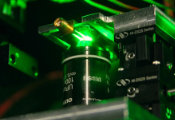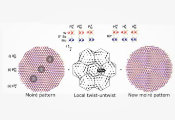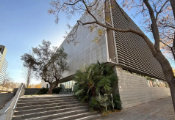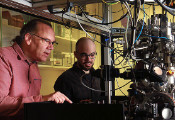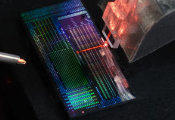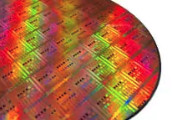Tracking Particle Motion in Synthetic Quantum Materials
September 19, 2024 -- Physicists at Purdue University have developed an innovative method to detect the motion of individual particles in quantum materials. This work, led by Alex Ruichao Ma, assistant professor of Physics and Astronomy, offers new insights into the quantum world and paves the way for future discoveries in quantum science and technologies.
Understanding quantum transport—how particles like electrons move in materials—is crucial for developing advanced materials and better electronic devices. While much has been learned from measuring macroscopic current, i.e., the collective flow of many particles, physicists have lacked the technology to track the microscopic motion of individual particles in quantum materials. Synthetic quantum matter, engineered to exhibit specific quantum phases and behaviors, allows scientists to study and manipulate quantum phenomena in a controlled environment with unprecedented precision.
Ma’s research team measured particle currents within a superconducting circuit lattice, a type of synthetic quantum matter. By controlling the particle number in the system, they observed how particle current and its quantum fluctuations change in different phases of matter – a first demonstration in synthetic quantum matter experiments. Furthermore, they generated complex particle motion by having the synthetic material interact with artificial particle reservoirs. They then applied the new current tracking method to study interaction-assisted quantum transport in a one-dimensional lattice.
Talking about the future of this research, Ma says, “We are working to apply this new quantum probe to study larger, more complex synthetic quantum materials. These findings will help us design new materials with novel properties and engineer better quantum computers.”
This work was recently published in Physical Review Letters: “Probing Site-Resolved Current in Strongly Interacting Superconducting Circuit Lattices”, Phys. Rev. Lett. 133, 060601 (2024). Graduate student Botao Du from Ma’s research lab led the experimental work. The authors acknowledge funding support from the National Science Foundation and the Air Force Office of Scientific Research. The superconducting qubit device used in this work was fabricated at Purdue’s Birck Nanotechnology Center.


